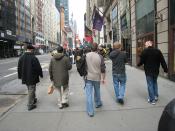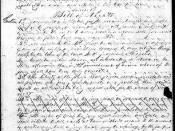The women's suffrage movement began in 1848 when a group of women met in
Seneca Falls New York. These women issued what became known as the Declaration
of Sentiments and Resolutions, an 11 pt. document outlining the demand for
equal rights. All of the articles of the Declaration passed except for the right
to vote. It was widely believed at that time, that women were both physically
and mentally inferior to men, and therefore should not have the right to vote.
The Seneca Falls convention was organized by a group of women who had been
active in the antislavery movement. When they were rejected as delegates to an
abolitionist convention because of their sex, they vowed to turn their attention
to women's rights. This convention attracted lots of attention from the press,
mostly negative. One of the organizers, Elizabeth cady Stanton, welcomed even
the negative attention. She said "It might start women thinking; and men to;
when men and women think about a new question they the first step is taken.
Because of their involvement in the abolitionist movement, women had
learned to organize, to hold public meetings, and conduct petition campaigns.
As abolitionists, women first won the right to speak in public, and they began
to evolve a philosophy of their own place in society. When the 15th amendment,
which gave black men the power to vote, was passed women became furious. Julia
Ward Howe said "For the first time, we saw... every Negro man govern every white
woman. This seemed to me intollerable tyranny."
After the fifteenth amendment was passed, the women's suffrage movement
turned its attention towards gaining the right to vote state by state. Susan B.
Anthony, a leader in the movement, met a wealthy businessman named George
Francis Train while campaigning in Kansas. He offered...


